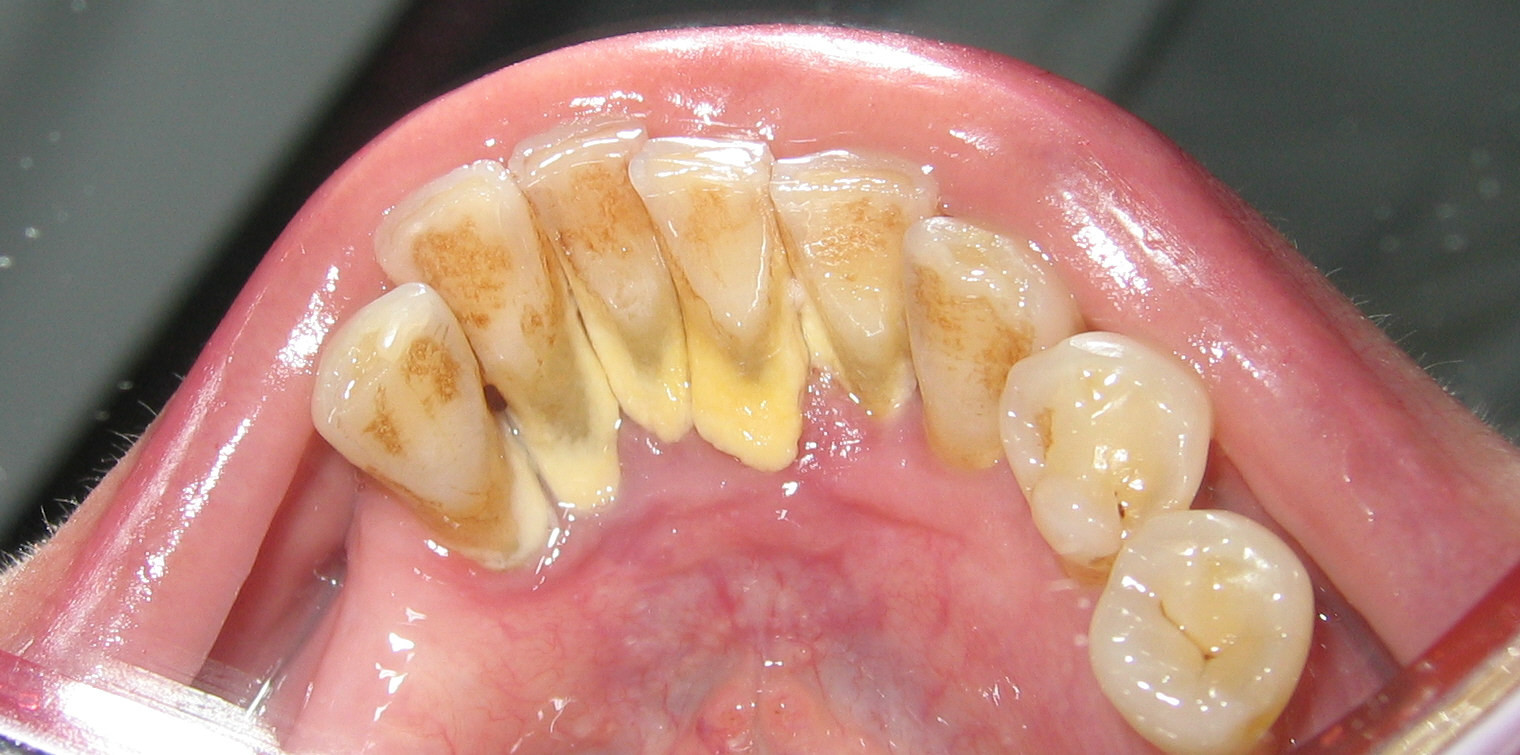Definition
Gingival or periodontal infection is a harmful infection that can develop in the mouth. It can cause inflammation and damage to the gums and jaw. Gingival infections are typically caused by poor oral hygiene over a long time. This leads to the accumulation of bacteria between the teeth and gums. However, several factors may contribute to the development of gingival infection. Overall, periodontitis and gingivitis are the two most common forms of periodontal infection.
Gingivitis (Gingival Inflammation)
Gingivitis is a minor type of periodontal disease characterized by inflammation of the gums caused by the accumulation of bacteria and plaque along the gum line and teeth. Not all cases of gingivitis will result in inflammation of the periodontal tissue. Gingivitis affects the majority of individuals at least once in their lives, and because of its minor symptoms, it is commonly ignored. However, more severe complications may develop if it is left untreated.
Periodontal disease (Disease of the Tooth Supporting Tissue)
This disease involves several abnormalities affecting the periodontal, which refers to the tissues surrounding and supporting the teeth, including the gingival tissue, alveolar bone, cementum connective tissue, etc.
Periodontitis is an incurable chronic inflammatory disease characterized by the progressive inflammation of the gingiva. Bacteria could penetrate the underlying tissue surrounding the tooth and cause damage to the structure that supports the teeth.
Gingival infection prevention and treatment are essential to prevent the development of more severe complications. Everyone is susceptible to a gingival infection. Visit your dentist immediately if you think you could be suffering from a gingival infection.
Causes
In most cases, bacteria and food particles accumulate in the tissue around the teeth, leading to gingival infections. The surface of your teeth is continually covered with a thin coating of plaque composed of bacteria and food waste. Plaque that extends below the gingival line might lead to the development of the infection.
Plaque may accumulate around your teeth if you do not brush, floss, and rinse your mouth with mouthwash. There will be a discharge of acid, which can destroy the teeth' enamel layer. This can cause your teeth to become more susceptible to decay. After 72 hours, the plaque will become rigid and transform into tartar. Tartar formation along the gingival line contributes to the difficulty of thoroughly cleaning the gums and the teeth. Plaque is more susceptible to bacterial invasion when cleaning the teeth and gums is difficult. Inflammation and irritation of the gums will develop into gingivitis over time.
If the progression of gingival inflammation persists without treatment, it might lead to the formation of cavities. Bacteria, plaque, and tartar can accumulate in the interdental gaps and progressively develop infections, known as periodontitis. The toxins of the bacteria in dental plaque, along with the body's enzymes that fight the infection, initiate the degradation of the bone and supporting tissue of the teeth. As the disease progresses, the cavities deepen, and more gingival tissue and bone are destroyed. This may break the tooth structure and cause it to fall out. Periodontal disease is the primary factor contributing to tooth loss in adults.
Risk Factor
Factors that increase the risk of gingival infections are:
- Poor oral hygiene
Gingival infections might occur if you don't brush and floss regularly. Gingivitis may develop when plaque and bacteria accumulate. Periodontitis can develop when accumulated bacteria in the mouth invade and spread to deeper layers of the tissue that supports the teeth.
- Hormonal changes
Hormone levels, including estrogen, fluctuate throughout pregnancy. These changes may cause an inflammatory response related to gingival infections, leading to more sensitive gums. These hormonal fluctuations are also closely associated with the quantity of Porphyromonas gingivalis in the oral cavity, which is correlated to gingival infections, although this correlation remains unknown.
- Conditions that may contribute to gingival damage
Diabetes mellitus is a significant contributor to periodontal disease. Diabetes is associated with specific mechanisms that may contribute to dental structures and inhibit recovery. Diabetes also impairs the body's capacity to regulate blood sugar, which increases the risk of infection, such as periodontal disease. Several conditions that may impair the immune system, such as cancer or HIV infection, may also impact the condition of the gingival tissue.
- Specific medications
Several medications may reduce saliva production. Saliva helps protect the teeth and gums. Certain medications, such as anti-seizure drugs, calcium channel blocker medications, chemotherapy, or specific contraceptive pills, may cause a condition known as xerostomia (dry mouth).
- Smoking
Smoking increases the risk of gingival disease and damage to the structures of the teeth by 5–20 times. Furthermore, smoking is correlated with accelerated bone atrophy, tooth loss, increased gingival recession, and reduced treatment efficacy.
- Age and medical history
A family history of dental disease may contribute to the development of gingivitis. Elderly people may have a more severe inflammatory reaction, which makes their teeth more susceptible to structural loss.
Symptoms
Gingival infections might manifest without pain or noticeable signs, even in severe conditions. The following are the symptoms that can manifest in gingival infections:
- Bleeding during and after tooth brushing
- Red and inflamed gums
- Chronic halitosis or unpleasant taste in the oral cavity
- Decayed gums
- Shifted or loose teeth
- Changes in tooth arrangement when chewing or fitting dentures
The possibility of developing gingival disease still exists, even if you do not experience any symptoms. In several cases, gingival disease may only affect a few teeth, such as the back molars. Dentists and periodontists are the only professionals who can identify and diagnose gingival disease.
Diagnosis
The dentist will assess the condition of the teeth through dental examinations and additional tests. The examination will assess the structure of the patient's teeth and gums. A panoramic dental X-ray can be performed to assess if there is a reduction in bone density and tissue damage in the tissues surrounding the teeth.
Management
The treatment aims to stimulate gingival recovery, reduce inflammation, decrease the depth of periodontal spaces and the risk of infection, and prevent the spread of the disease. The severity of the disease, how it responds to treatment, and general health are all factors in determining treatment options. Non-surgical treatments to reduce bacterial growth are available, as is surgery to repair the gingival supporting tissue. In addition to dental care, there are several home remedies to help relieve the symptoms, such as:
- Brushing the teeth at least twice a day
- Using mouthwash
- Flossing (cleaning between the teeth) using dental floss
- Rinse your mouth with clean water after eating
- Gargle warm salt water to help reduce swelling and kill bacteria
Complications
The Centers for Disease Control and Prevention (CDC) have identified a possible correlation between periodontal disease and severe medical conditions. Oral bacteria that reach the bloodstream are generally harmless to people with good immune systems. Stroke and heart disease are health concerns related to pathogens under specific conditions. Diabetes is not only a risk factor for both gingival and periodontal disease, but periodontal disease can also complicate diabetes.
Gingival infections may also increase the possibility of severe complications, such as access, recurrent gingival inflammation or infection, and gingival ulcerations.
Prevention
Good oral hygiene and routine dental examinations are essential preventions against gingival and periodontal disease because they can help regulate the amount of microorganisms in the oral cavity. The American Dental Association lists several oral recommendations for maintaining healthy teeth and gums, including:
- Stop smoking
- Use fluoride toothpaste twice a day
- Use dental floss or water flosser to remove plaque
- See the dentist regularly for cleanings and exams
- Limit sugary drinks and foods
These procedures do not guarantee that gingival infections will be avoided; however, they may help lower manageable risk factors for this infection.
When to See a Doctor?
It is recommended to schedule dental examinations every six to twelve months. Make an appointment with your dentist as soon as possible if you are experiencing any of the symptoms listed above and have risk factors for gingival infection.
Want to know information about other diseases? Check here, yes!
- dr Hanifa Rahma
HealthLine: Gingivitis Gum Disease Overview (2021). Retrieved March 18, 2023, from https://www.healthline.com/health/gingivitis.
Medical News Today: Gum Infections (2020). Retrieved March 18, 2023, from https://www.medicalnewstoday.com/articles/gum-infection.
WebMD: Gingivitis and Periodontal Disease (Gum Disease) (2021). Retrieved March 18, 2023, from https://www.webmd.com/oral-health/guide/gingivitis-periodontal-disease.
Gasner, N.S., and Schure, R.S. Periodontal Disease. (2022). Retrieved March 18, 2023, from https://www.ncbi.nlm.nih.gov/books/NBK554590/#.












